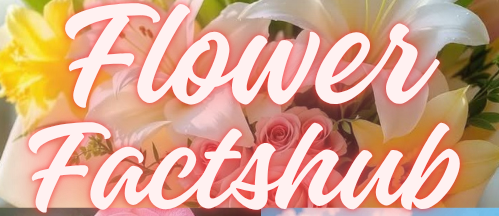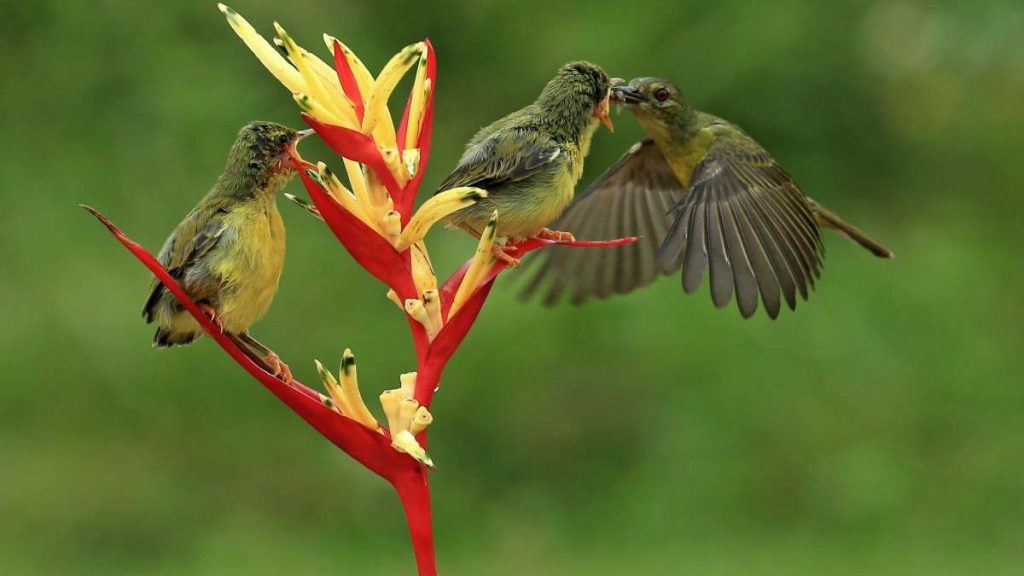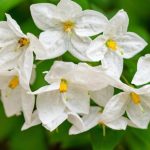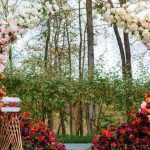Hummingbirds are nature’s tiny acrobats fast, vibrant, and endlessly fascinating. If you’ve ever watched one hover effortlessly near a flower, sipping nectar with its needle-like beak, you know how magical these little birds are. But how do you turn your garden into a hummingbird hotspot? The secret lies in choosing the right hummingbird flowers plants that provide the nectar, color, and structure these birds love.
In this guide, we’ll explore the best flowers for hummingbirds, practical tips for planting and maintaining your garden, and how to create a year-round haven for these winged jewels.
Why Do Hummingbirds Love Certain Flowers?
Hummingbirds have specific needs when it comes to feeding:
- Bright Colors: They’re especially drawn to red, orange, and pink blooms.
- Tubular Shapes: Their long beaks and tongues are perfect for sipping from trumpet-like flowers.
- High Nectar Content: They need energy-rich nectar to fuel their rapid wing beats (up to 80 times per second!).
By planting flowers that meet these criteria, you’ll have hummingbirds visiting daily.
Top 10 Best Flowers for Hummingbirds
Here are some of the best flowers to attract hummingbirds to your garden:
1. Bee Balm (Monarda)
- Color: Red, pink, purple
- Bloom Time: Summer
- Why They Love It: The tubular shape is perfect for their beaks, and the bright colors catch their eye.
2. Trumpet Vine (Campsis radicans)
- Color: Orange, red
- Bloom Time: Summer to fall
- Why They Love It: Large, trumpet-shaped flowers hold plenty of nectar.
3. Salvia (Sage)
- Color: Red, blue, purple
- Bloom Time: Spring to fall
- Why They Love It: Long blooming season and high nectar production.
4. Columbine (Aquilegia)
- Color: Red, yellow, pink
- Bloom Time: Spring
- Why They Love It: Unique spurred flowers are easy for hummingbirds to access.
5. Fuchsia Hummingbirds Flowers
- Color: Pink, purple, red
- Bloom Time: Summer to fall
- Why They Love It: Hanging flowers make it easy for hummingbirds to feed mid-flight.
6. Penstemon (Beardtongue)
- Color: Red, pink, purple
- Bloom Time: Late spring to summer
- Why They Love It: Slender tubes are ideal for their long beaks.
7. Coral Honeysuckle (Lonicera sempervirens)
- Color: Red, orange
- Bloom Time: Spring to summer
- Why They Love It: A native vine that provides continuous nectar.
8. Cardinal Flower (Lobelia cardinalis)
- Color: Bright red
- Bloom Time: Late summer
- Why They Love It: One of the most reliable hummingbird Flowers magnets.
9. Zinnia Hummingbirds Flowers
- Color: Red, orange, pink
- Bloom Time: Summer to frost
- Why They Love It: Easy to grow and provides abundant nectar.
10. Lupine (Lupinus)
- Color: Purple, blue, pink
- Bloom Time: Spring to early summer
- Why They Love It: Tall spikes attract hummingbirds searching for food.
How to Design a Hummingbird-Friendly Garden
1. Plant in Clusters
Hummingbirds are more likely to visit if they see a large group of flowers rather than single plants. Group at least 3-5 of the same plant together for maximum impact.
2. Choose a Succession of Blooms
To keep hummingbirds coming all season, plant flowers that bloom at different times:
- Spring: Columbine, Lupine
- Summer: Bee Balm, Salvia, Trumpet Vine
- Fall: Zinnias, Cardinal Flower
3. Add a Water Feature
Hummingbirds love moving water consider a small fountain or mister. They enjoy flying through fine sprays to bathe.
4. Avoid Pesticides
Chemicals can harm hummingbirds and reduce insect populations (which they also eat). Opt for organic gardening methods instead.
5. Provide Perches
Hummingbirds need spots to rest between feedings. Small branches, trellises, or thin wires give them a place to pause.
DIY Hummingbird Nectar Recipe
While flowers are the best natural food source, you can supplement with a simple sugar-water feeder:
Ingredients:
- 1 part white sugar
- 4 parts water
Instructions:
- Boil water to remove impurities.
- Mix in sugar until fully dissolved.
- Cool completely before filling feeders.
- Do not use honey, artificial sweeteners, or red dye—these can harm hummingbirds.
Pro Tip: Clean feeders every 2-3 days to prevent mold and bacteria.
Common Mistakes to Avoid
- Planting Only Non-Native Flowers – Native plants often provide better nectar and attract more hummingbirds.
- Overcrowding Plants – Good airflow prevents disease and makes flowers more accessible.
- Neglecting Maintenance – Deadhead spent blooms to encourage more flowers.
A Garden Alive with Wings
Creating a hummingbird Flowers garden is one of the most rewarding ways to connect with nature. By choosing the right flowers, providing water and perches, and avoiding chemicals, you’ll soon have these dazzling birds visiting regularly.
Final Thoughts
Planting hummingbird flowers is one of the most joyful ways to add color, movement, and life to your garden. These energetic little birds not only brighten your outdoor space but also help with pollination, creating a healthier garden ecosystem. By choosing the right blooms and caring for your plants, you can turn your yard no matter how big or small into a vibrant haven for hummingbirds.
Embrace the magic of these winged visitors and the blooms they love. Whether you’re working with a full garden or a sunny balcony, hummingbird-friendly flowers will reward you with endless delight and natural beauty throughout the season.
Frequently Asked Questions (FAQs)
Q1: What types of flowers attract hummingbirds?
Hummingbirds are drawn to bright, tubular-shaped flowers like salvia, bee balm, trumpet vine, fuchsia, columbine, and honeysuckle.
Q2: What colors do hummingbirds prefer?
They’re especially attracted to red, but also love orange, pink, and purple flowers with vibrant, saturated tones.
Q3: Do I need to use feeders if I grow hummingbird flowers?
Not necessarily. A well-planted garden with nectar-rich flowers can naturally feed hummingbirds, but feeders can help supplement.
Q4: Are native plants better for attracting hummingbirds?
Yes. Native flowering plants are more familiar to local hummingbirds and often provide better nutrition and require less maintenance.
Q5: How do I plant a hummingbird-friendly garden?
Use a variety of flowering plants that bloom at different times, provide sunny spots, and avoid pesticides that can harm hummingbirds.



